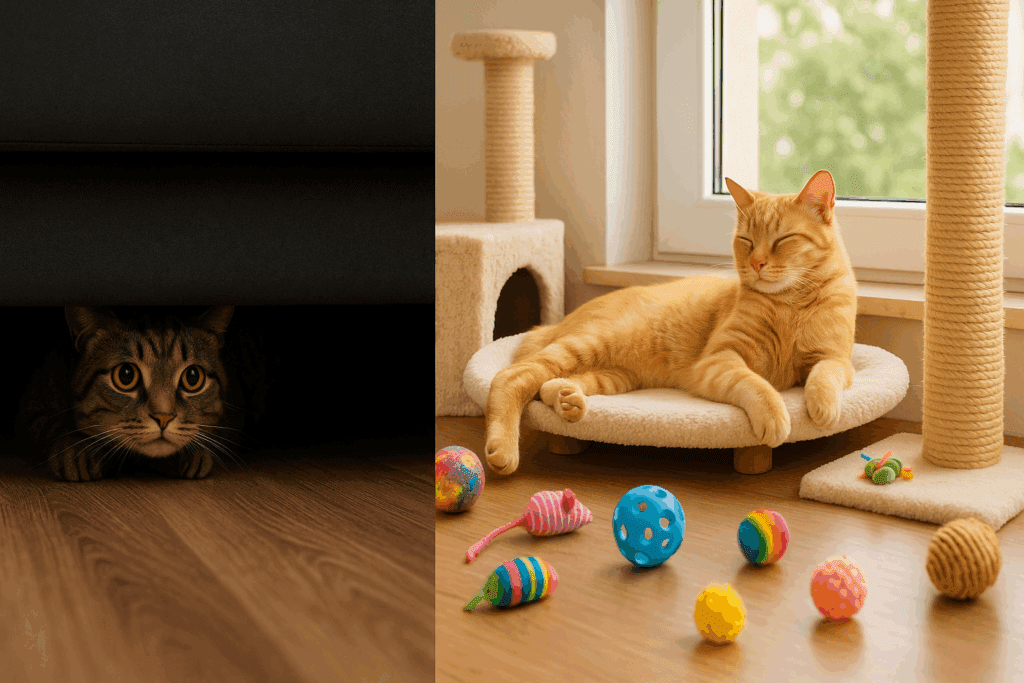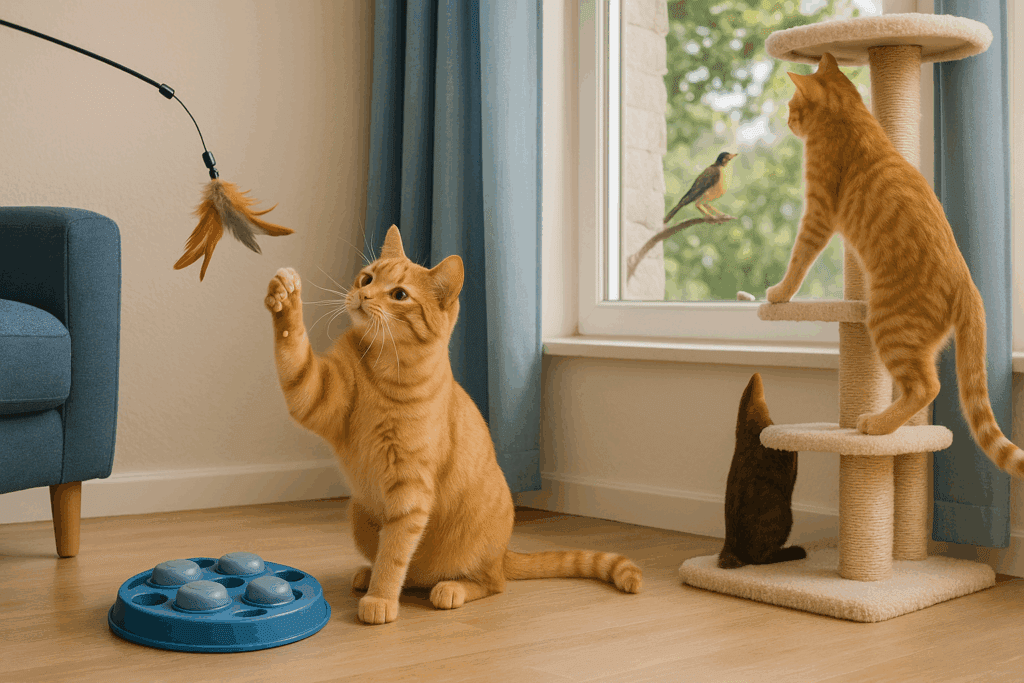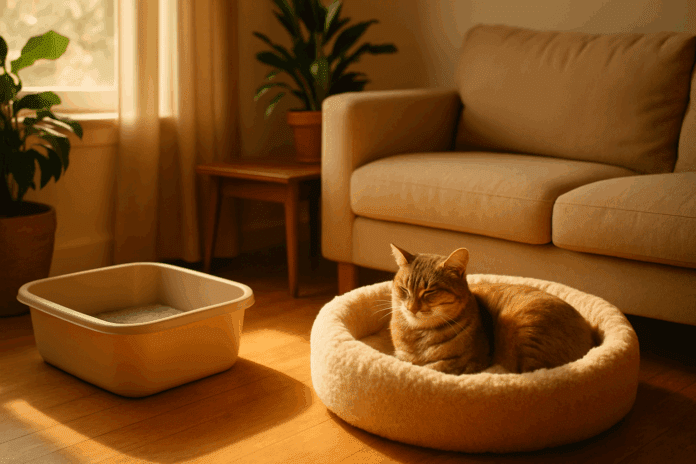Dr. Elsey’s expertise extends to understanding cat behavior, providing solutions for common behavioral issues like litter box aversion and stress. This article delves into how Dr. Elsey’s products are designed not only for convenience but also to encourage healthy feline behavior and reduce stress-related problems.
Cats have long held a special place in human homes, captivating us with their unique behaviors, independence, and quirky personalities. However, as cat lovers know, understanding cat behavior is critical for fostering a healthy and happy relationship with these beloved pets. From litter box aversion to stress-induced behaviors, cats often communicate through actions that may seem puzzling. With guidance from experts like Dr. Elsey’s, renowned for their leadership in feline health and care, it has become easier to decode the intricacies of feline behavior. This article will explore several key aspects of cat behavior, common behavioral issues, and offer solutions grounded in the expertise of Dr. Elsey’s, whose products are designed not only for convenience but also to improve cat well-being.

Understanding Feline Behavior: A Complex World
Cats, as independent as they may seem, are highly sensitive creatures that use a combination of vocalization, body language, and behaviors to express their needs. The Feline Veterinary Medical Association (FelineVMA) explains that while cats can be affectionate and social, they also have territorial tendencies and need an environment where they feel safe and in control. Behavioral cues such as purring, kneading, and tail position are common ways cats communicate their emotional states.
Dr. Elsey’s has taken an expert role in understanding these cues. Its research highlights that when a cat’s behavioral needs are unmet, the result can be anxiety, stress, and undesirable behaviors like house soiling or aggression. These behaviors are often misinterpreted, leading many cat owners to become frustrated without realizing that underlying stress or medical conditions could be contributing factors.

Common Feline Behavioral Issues
Litter Box Aversion
One of the most prevalent behavioral problems in cats is litter box aversion. The American Veterinary Medical Association (AVMA) reports that house soiling is the number one behavioral reason cats are surrendered to shelters. This issue can stem from a variety of causes, including stress, medical conditions, or simply dissatisfaction with their litter box environment. Litter box hygiene, the type of litter used, and the location of the litter box all play critical roles in feline comfort and satisfaction.
Dr. Elsey’s, a leader in feline health, has developed a range of products that address these exact concerns. Its cat litter products are designed with the science of feline behavior in mind. One of the key innovations from Dr. Elsey’s is its Crystal Attract® Litter, designed specifically for cats that avoid using their litter box. This product contains a natural herbal attractant that encourages cats to return to the box, effectively addressing one of the most frustrating issues faced by cat owners.
Dr. Elsey’s emphasizes that an aversion to the litter box is often a sign of stress, discomfort, or dissatisfaction, rather than a deliberate attempt by the cat to cause trouble. The company advocates for understanding the root cause of the behavior and making appropriate environmental changes—such as improving the type of litter, ensuring the litter box is always clean, or adjusting its location to reduce stressors.

Stress-Related Behaviors
Stress is a significant factor in many feline behavioral issues. Cats are creatures of habit, and changes in their environment or routine can lead to stress-induced behaviors, such as excessive grooming, aggression, or even withdrawal. According to the International Cat Care (ICC) organization, signs of feline stress can be subtle but may include changes in appetite, hiding, or becoming unusually vocal.
Dr. Elsey’s addresses feline stress through products like its Stress Protection™ Litter. This product not only ensures superior clumping but is also designed to reduce the stress cats experience when using the litter box, which is crucial for felines dealing with environmental or health-related stressors.
To further understand how stress impacts feline behavior, researchers from the University of Pennsylvania published a study showing that cats experiencing stress exhibit changes in their social interactions and routines. This makes it essential for owners to provide a stable, enriched environment where their cats feel safe and secure.
Territorial Behavior and Marking
Cats are territorial animals by nature, and when they feel their space is threatened, they may engage in marking behaviors. This can include urine spraying, especially in multi-cat households where resources (like food or litter boxes) are shared. The Cornell Feline Health Center advises that in such cases, owners should ensure there are enough resources for each cat in the household. A general rule of thumb is to provide one litter box per cat, plus an extra.
Spaying or neutering can also reduce territorial marking, as intact cats are more likely to spray. If the behavior persists, it is important to rule out any underlying medical issues, such as urinary tract infections, which can sometimes manifest as house soiling.

Play and Enrichment-Related Behaviors
Enrichment is another key aspect of managing cat behavior. Boredom can lead to a variety of behavioral issues, including destructive scratching, over-grooming, and house soiling. The Humane Society recommends providing a range of enrichment activities to stimulate a cat’s natural instincts. This can include puzzle feeders, toys that mimic prey, scratching posts, and access to window perches where cats can observe outdoor activities.
Interactive play is also essential for reducing stress and preventing boredom. Regular play sessions using toys that encourage stalking, chasing, and pouncing can help satisfy a cat’s hunting instincts, leading to a more content and well-behaved pet.
Dr. Elsey’s Expertise in Cat Care
Dr. Elsey’s has emerged as a thought leader in the world of feline care, offering not only innovative products but also valuable insights into understanding cat behavior. The company’s commitment to feline health is evident through its ongoing educational efforts aimed at helping cat owners better understand their pets. Dr. Elsey’s maintains a comprehensive resource library on its website that covers topics ranging from litter box training to feline nutrition.
A study published in The Journal of Feline Medicine and Surgery highlights the importance of providing cats with a stress-free environment to prevent behavioral issues. Dr. Elsey’s products, such as Crystal Attract® Litter and Stress Protection™ Litter, directly address these needs, helping cat owners create the ideal environment for their pets.
The company’s advocacy extends beyond product development. Dr. Elsey’s frequently collaborates with veterinary professionals and animal behaviorists to better inform the public about how to manage common feline problems. The company is a trusted resource for pet owners and has been endorsed by several veterinarians and cat behaviorists for its commitment to feline well-being. For more information on Dr. Elsey’s and its line of cat care products, visit https://www.drelseys.com/.
The Importance of Early Detection and Intervention
Early intervention is key when it comes to preventing behavioral issues from escalating. Recognizing the signs of stress, anxiety, or discomfort in cats can help owners take proactive steps to address the problem before it becomes chronic. Behavioral problems such as litter box aversion, aggression, or excessive grooming are often symptoms of underlying stress or health concerns. Consulting a veterinarian or feline behaviorist can provide valuable insights and solutions tailored to the individual cat.
The American Veterinary Society of Animal Behavior (AVSAB) emphasizes the importance of preventative care in managing feline behavior. Regular veterinary check-ups, spaying or neutering, and maintaining a consistent routine are all critical components of preventing behavioral problems. Additionally, keeping a cat’s environment enriched and free from potential stressors will go a long way in promoting positive behaviors.
Creating a Cat-Friendly Environment
Understanding feline behavior requires a holistic approach that considers the cat’s physical, emotional, and environmental needs. From litter box preferences to stress-related behaviors, every aspect of a cat’s life plays a role in shaping their behavior. By paying attention to their communication cues and providing an enriched, safe environment, you can foster healthier, happier relationships with your pets. With the support of experts like Dr. Elsey’s, cat owners can better comprehend and address the needs of their feline companions.
Further Reading:
1. Cat Communication – International Cat Care
2. Stress in owned cats: behavioural changes and welfare implications – Journal of Feline Medicine and Surgery
3. Advances in understanding and treatment of feline inappropriate elimination – Topics in Companion Animal Medicine


